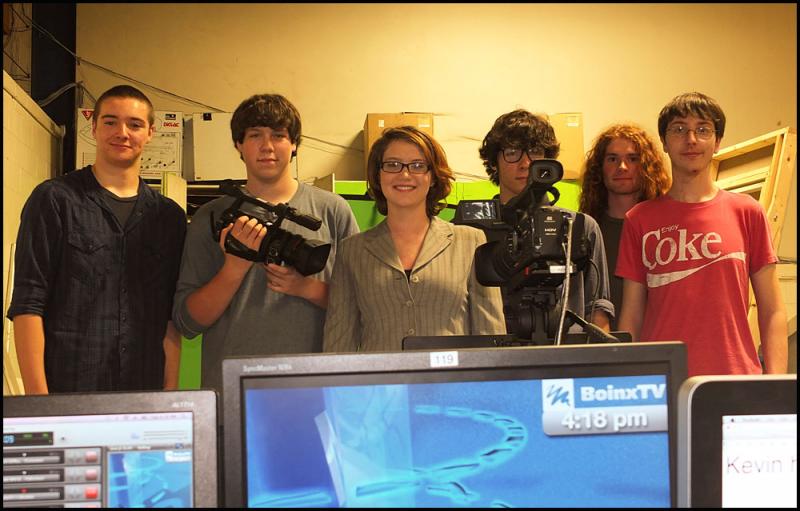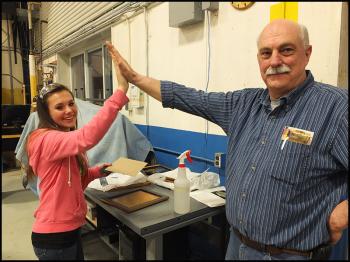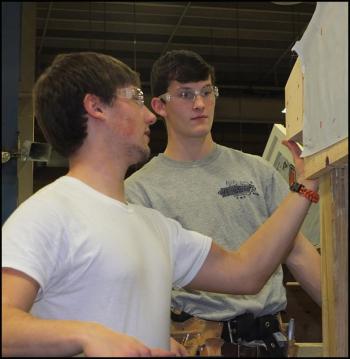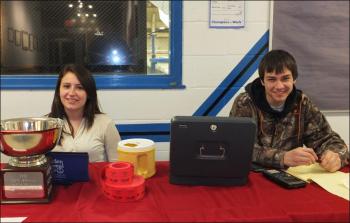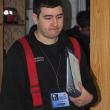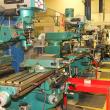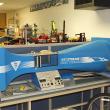Open house at Mid-Coast School of Technology: designing, building, crafting, cooking and fixing
ROCKLAND — The Region 8 Mid-Coast School of Technology in Rockland held an open house Jan. 14 to showcase what the school has to offer and give people a chance to see the hands-on approach to learning that the school excels at.
Beth Fisher, Director of the Mid0Coast School of Technology, said the school has 16 programs and serves 19 towns.
“We serve six sending high schools, the three on the mainland and the three on the islands,” she said. “We serve 400 students, some in the building and some in our satellite programs. We also have dual enrollment programs where students can get college and high school credits at the same time.”
The students all seemed happy and into learning their particular trade. Fisher commented that a lot of students need hands-on learning.
“There are a lot of students who need to experience their learning,” she said. “Students who can take the things they’ve learned academically and apply them to skills that they would use out in the real world. For a lot of students, even the ones who have maybe struggled with math, when they see how that math would be used in a job, it has relevance for them.”
Fisher said they would love to add more programs, but there’s no room to expand. Every square inch in the building is being used, she said. She also noted that MCST is an independent school.
“We are an independent school and I serve as the director in the capacity of superintendent working for the board,” she said. “There are 27 technical centers in the state and eight of us are set up as regions because we are not attached to a high school. Our funding comes from an assessment to our sending high schools. We build our budget and then based on the potential students all schools can send, they are assessed a portion of our budget.”
Dan Dishner, instructor in residential construction, explained what his two students were doing this evening.
“These two students are working on their second semester project, a 12-by-20 cottage,” said Dishner. “They’re both first year students and when you get into putting trim boards on a building, it requires some finesse. When the building is done, it’ll be moved out of here whole. You can transport these on a car carrier. We did two last year and sold them both.”
Lauren Arford, instructor of preengineering, said it’s a hands-on class with principles of engineering, civil engineering and architecture.
“Right now I have 23 students,” said Arford. “For civil engineering and architecture, the student will design a home for a classmate. They also do a commercial building, which this year will be an addition to the school. We work as a team and we’ll present three different additions. The students learn surveying, as well as, architecture and soil analysis for the structure. In principles of engineering we deal with the basic first year of engineering classes, including mechanics, electricity, strengthen materials, structures and dynamics.”
Clare Stinson, teaches introduction to applied technology. He said he had 42 students right now.
“It’s an introductory course to programs available at the school. The freshmen and sophomores come to this program to get the basic skills they need to be successful in one of the other programs at our school.”
Fisher said that many of the students go on to secondary education.
“It might be the military, or an apprentice program of some kind,” said Fisher. “It might be a culinary school, or Wyoming Tech to do something in automotive. We have students that go on to theMaine Media College, or a community college. We get students that go all those different pathways, but all our programs have articulation agreements. Those students are getting college credits while they are still in high school. And thos agreements are negotiated with each school. We have agreements with all the community colleges in the state. An example would be you might be taking an EMT course here, but you’re getting credit at a school that offers that program. Its student by student, program by program.”


